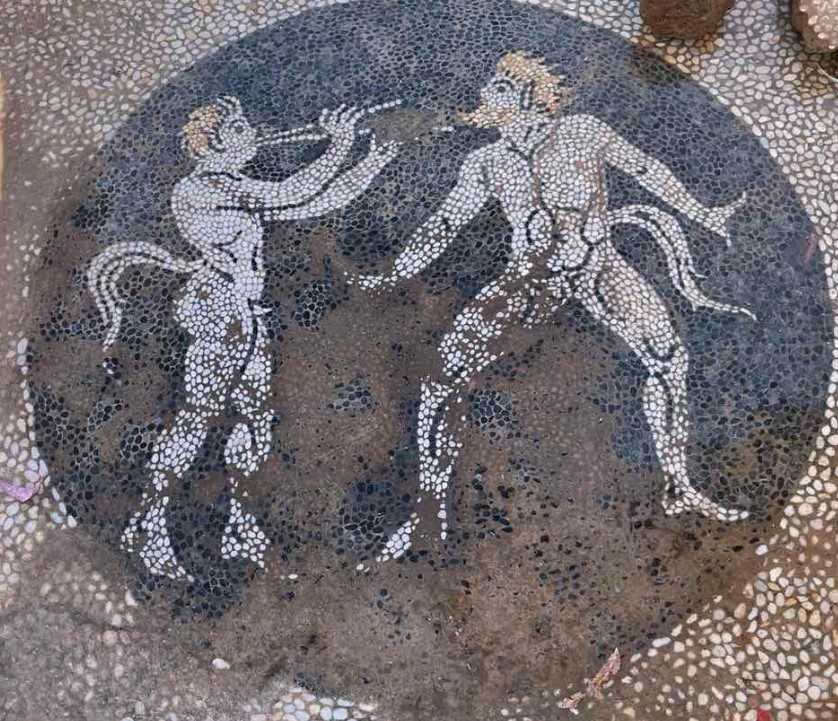
Construction workers discovered a mosaic floor from the 4th century B.C.E. while installing underground water pipelines in Eretria, a Greek town north of Athens.
The mosaic, made of white, black, yellow, and red pebbles, depicts a duo of bearded, yellow-haired satyrs—half-man, half-goat spirits associated with Dionysus, the Greek god of winemaking, fertility, and revelry. True to their mythological connotations, one of the creatures appears to be dancing while the other plays a double flute.
Pottery shards and stone artifacts indicate that humans first settled near Eretria during the late Neolithic period, between 3,000 and 3,500 years ago. According to the poet Homer, author of the Iliad and Odyssey, Eretria was one of the city-states that participated in the legendary Trojan War. During the 8th century B.C.E., Eretria and its sister city and rival Chalcis developed into wealthy trading powers, establishing colonies on the Italian coasts and obtaining control of Andros, Ceos, and several other islands in the Aegean Sea.
The mosaic found in Eretria. Photo courtesy of the Greek Ministry of Culture and Sport.
This isn’t the first mosaic to be discovered in Eretria, and because the others are thought to have been made sometime between 360 and 350 B.C.E., the satyrs might well have been assembled around the same time. According to a statement by the Greek Ministry of Culture and Sport, the 4th century B.C.E. saw a boom of luxurious private houses with courtyards and large banquet halls to entertain guests. If houses had mosaic floors, this is where they were commonly located.
Raised sections of mortar along the mosaic floor indicate the onetime presence of beds and recliners. Affluent (male) Greeks famously ate lying down as opposed to sitting, eating small bites of many different courses in the presence of their friends, business partners, and political allies. Dionysian imagery provided a suitable backdrop for these dinner parties, which involved wine, exotic foods, and copious amounts of wine.
If the era provided economic opportunity for Eretrians, it was also a time of great political uncertainty. Due to their proximity to one another, Eretria sided with Athens during the Peloponnesian War, a decades-long conflict that saw the southern powers face off against Sparta and Corinth. After Sparta emerged victorious in 404 B.C.E., Athens sought to gain control over Euboea, the region Eretria was part of. After living under Athenian hegemony, Eretria rebelled against their former ally in 349 B.C.E.
In 343 B.C.E., the city was briefly taken over by supporters of Phillip II of Macedon, the king of Macedonia and father of Alexander the Great, before the restoration of Athenian power two years later. In the 5th and 6th centuries C.E., when Christianity spread eastward, the land formerly occupied by ancient Eretria was used as a cemetery, with five tombs being found in the vicinity of the satyr mosaic alone.
According to the Greek ministry, the mosaic is currently under supervision of a local chapter of Greece’s Council of Monuments and has been covered to prevent further damage. Needless to say, the water pipeline plan has been modified to circumvent the site.